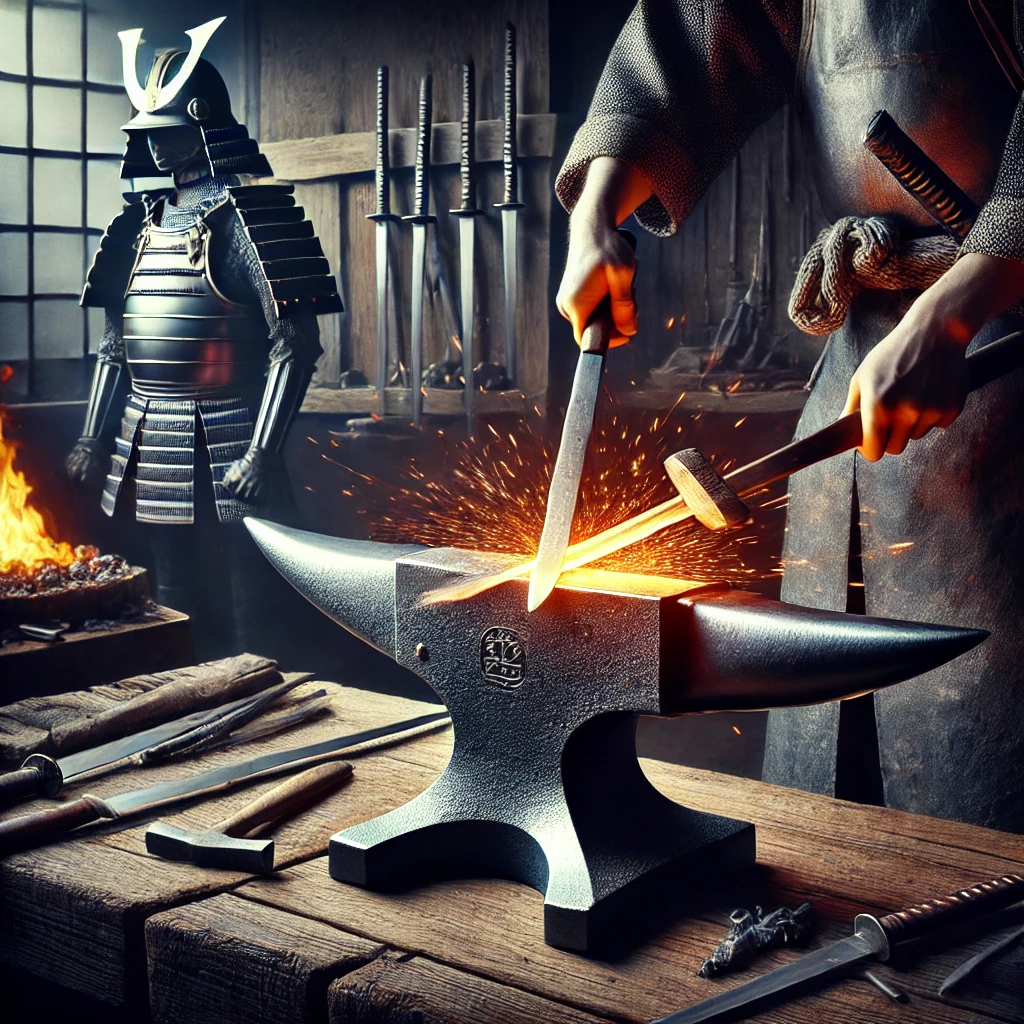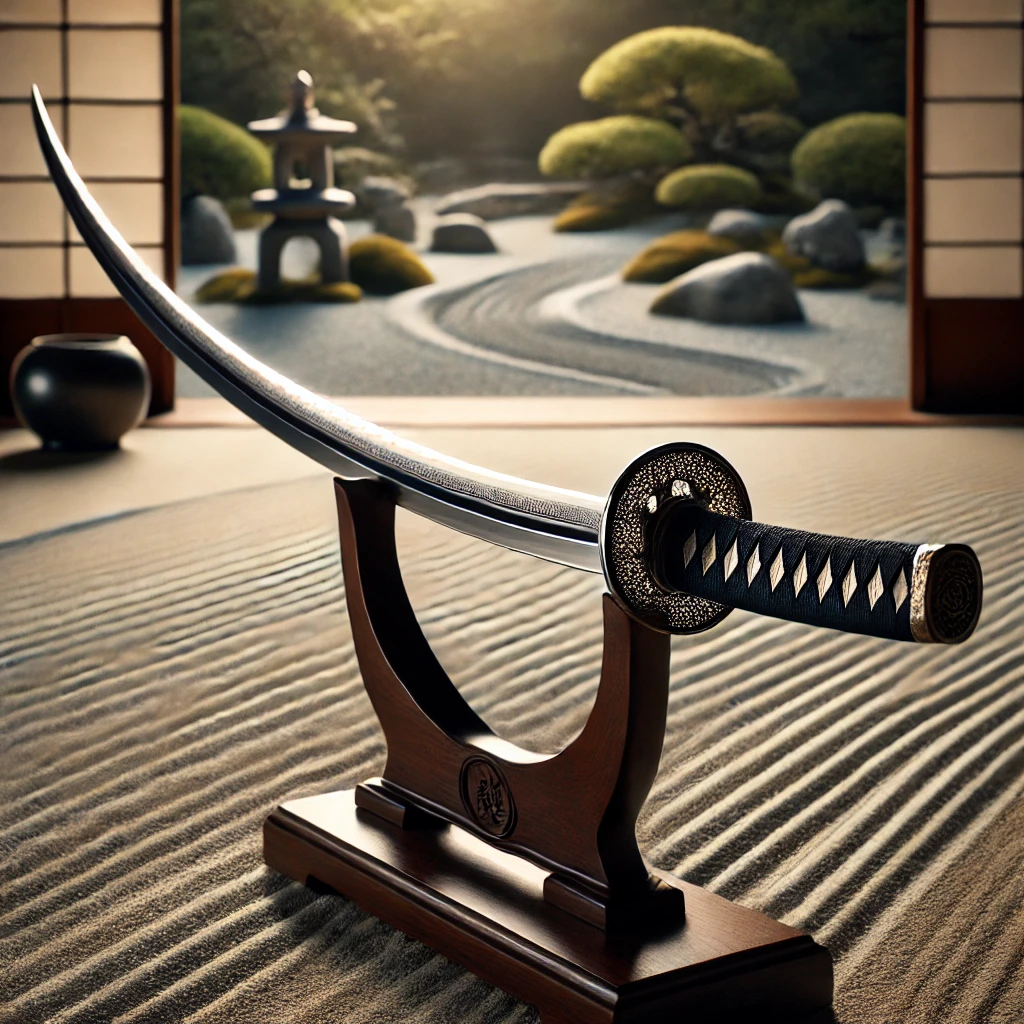The katana, the samurai sword, is renowned for its exceptional sharpness. This sharpness is not merely a product of design but results from centuries of refinement and craftsmanship. Understanding why the katana blade is so sharp requires exploring the materials, techniques, and philosophies behind its creation.

I. The Steel: A Crucial Foundation
The sharpness of a Full Tang Katana begins with the steel used. Swordsmiths use a special type of steel called tamahagane. This steel is made by smelting iron sand in a traditional furnace. The process creates steel with a high carbon content, crucial for hardness. The steel’s quality is meticulously controlled, ensuring it has the right properties for a sharp blade.
II. The Art of Folding: Removing Impurities
Once the steel is ready, the swordsmith begins the process of folding. Folding the steel is an essential step in creating a sharp blade. The swordsmith heats the steel and hammers it, then folds it over and over. This process can be repeated up to 16 times. Each fold reduces impurities in the steel, making it stronger and more flexible. The folding process also aligns the carbon particles, contributing to the blade’s sharpness.
III. Differential Hardening: Creating a Hard Edge
The katana’s sharp edge is achieved through a technique called differential hardening. After the steel is folded, the swordsmith applies clay to the blade. The edge of the blade is left exposed, while the rest is covered. The blade is then heated and quenched in water. The exposed edge cools rapidly, becoming very hard, while the covered part cools slowly, remaining softer. This contrast between hard and soft steel gives the katana its sharpness and durability.
IV. The Polishing Process: Refining the Edge
After hardening, the katana undergoes a meticulous polishing process. Polishing is crucial for achieving the katana’s legendary sharpness. The swordsmith uses various whetstones to sharpen the blade, starting with coarse stones and finishing with very fine ones. Each step refines the edge, making it razor-sharp. The final polishing stage is an art in itself, bringing out the blade’s sharpness and beauty.
V. The Blade’s Geometry: Aiding in Sharpness
The geometry of the katana blade also contributes to its sharpness. The blade has a single, slightly curved edge. This curvature allows for smoother, more efficient cuts. The blade’s cross-section is typically triangular, with a thick spine that tapers to a thin edge. This design focuses force along the edge, maximizing cutting power and sharpness. The shape of the blade is as important as the materials and techniques used.
VI. The Role of the Swordsmith’s Skill
A katana’s sharpness is ultimately a reflection of the swordsmith’s skill. Master swordsmiths spend years honing their craft, learning the precise techniques required to create a sharp blade. Every step in the katana’s creation, from steel selection to polishing, requires expertise. The swordsmith’s ability to control each element determines the blade’s final sharpness. The katana is not just a weapon; it is a testament to the swordsmith’s artistry and dedication.
VII. The Philosophy Behind the Sharpness
The sharpness of the katana is not just about cutting power; it also reflects samurai philosophy. The samurai valued precision, discipline, and mastery. The katana’s sharpness symbolizes these ideals. For the samurai, wielding a sharp blade was a way to demonstrate their commitment to their craft and their code of honor. The katana’s sharpness is a physical representation of the samurai’s dedication to excellence.
VIII. The Importance of Maintenance
Maintaining a katana’s sharpness is as important as its creation. Samurai took great care of their swords, regularly cleaning and sharpening them. A well-maintained katana could retain its sharpness for many years. Proper maintenance involves careful attention to the blade’s edge, using the right tools and techniques. The katana’s sharpness is not just a product of its initial creation but also of ongoing care and respect.
IX. Modern Perception: The Katana’s Legacy
Today, the katana’s sharpness continues to be admired and respected. Collectors, martial artists, and enthusiasts appreciate the blade’s precision and cutting power. Modern swordsmiths still use traditional techniques to create katanas, ensuring that the legacy of sharpness lives on. The katana remains a symbol of craftsmanship, honor, and the pursuit of perfection.

X. Conclusion
In conclusion, the katana’s sharpness is the result of a combination of factors. High-quality steel, meticulous folding, differential hardening, and expert polishing all contribute to the blade’s sharpness. The swordsmith’s skill and the samurai’s philosophy further enhance the katana’s sharp edge. Maintaining this sharpness requires ongoing care and respect. The katana is more than just a sword; it is a symbol of the pursuit of excellence. Its sharpness reflects the dedication, precision, and mastery that define the samurai and their legacy.